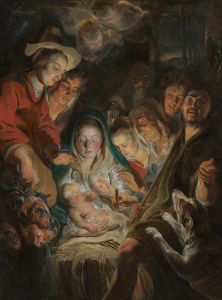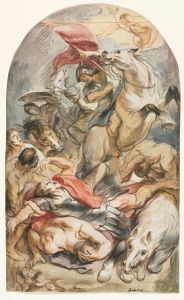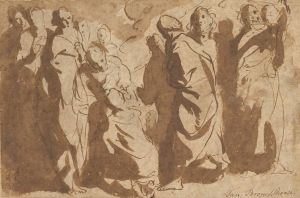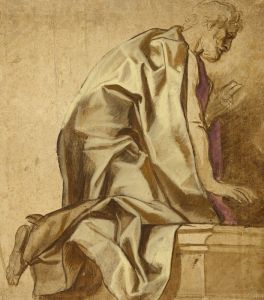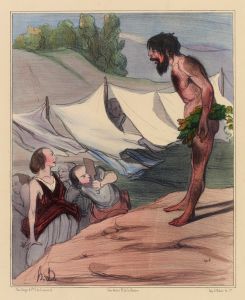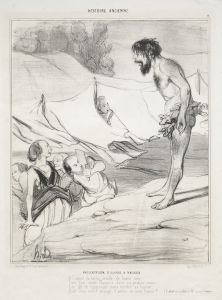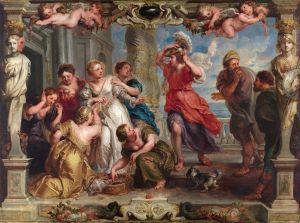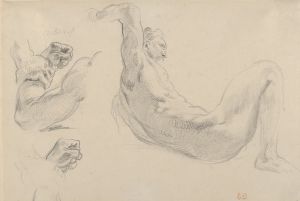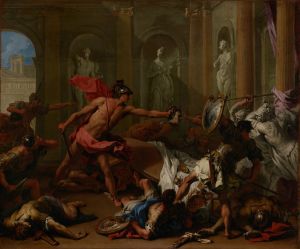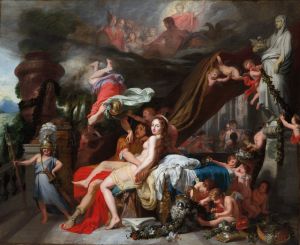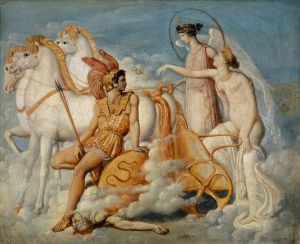
Ulysses Threatening Circe
A hand-painted replica of Jacob Jordaens’s masterpiece Ulysses Threatening Circe, meticulously crafted by professional artists to capture the true essence of the original. Each piece is created with museum-quality canvas and rare mineral pigments, carefully painted by experienced artists with delicate brushstrokes and rich, layered colors to perfectly recreate the texture of the original artwork. Unlike machine-printed reproductions, this hand-painted version brings the painting to life, infused with the artist’s emotions and skill in every stroke. Whether for personal collection or home decoration, it instantly elevates the artistic atmosphere of any space.
Jacob Jordaens, a prominent Flemish Baroque painter, created the artwork "Ulysses Threatening Circe" in the 17th century. Jordaens, known for his vibrant use of color and dynamic compositions, was a leading artist of his time, often associated with the Antwerp school. He was a contemporary of Peter Paul Rubens and Anthony van Dyck, and while he never traveled to Italy, Jordaens was influenced by the Italian Renaissance and Baroque styles, which he adapted into his own unique approach.
"Ulysses Threatening Circe" is based on a scene from Homer's epic poem, "The Odyssey." In this narrative, Ulysses (or Odysseus, as he is known in Greek) encounters the sorceress Circe on his journey home from the Trojan War. Circe is known for her ability to transform men into animals, and she uses this power on Ulysses' crew, turning them into swine. However, with the help of the god Hermes, Ulysses is able to resist Circe's magic and confronts her, demanding that she restore his men to their human forms.
Jordaens' painting captures this dramatic moment of confrontation. Ulysses is depicted as a strong and determined figure, emphasizing his heroic qualities. The tension between the two characters is palpable, with Ulysses' assertive posture and Circe's reaction conveying the power dynamics at play. Jordaens' skillful use of light and shadow adds depth to the scene, highlighting the emotional intensity of the encounter.
The painting is notable for its rich color palette and detailed rendering of textures, typical of Jordaens' style. The artist's ability to convey narrative through expressive figures and dynamic compositions is evident in this work. Jordaens often infused his paintings with a sense of movement and vitality, characteristics that are clearly present in "Ulysses Threatening Circe."
Jordaens' interpretation of this mythological subject reflects the Baroque period's fascination with classical themes and its emphasis on drama and emotion. The Baroque era was marked by a heightened interest in storytelling through art, and Jordaens was adept at bringing these stories to life on canvas. His works often featured robust figures and lively scenes, drawing viewers into the narrative.
While "Ulysses Threatening Circe" is a testament to Jordaens' artistic prowess, it also serves as an example of the broader cultural and artistic trends of the 17th century. The painting exemplifies the Baroque interest in exploring human emotions and the complexities of mythological tales. Through his masterful technique and keen storytelling ability, Jordaens has left a lasting impact on the art world, with "Ulysses Threatening Circe" standing as a significant piece within his oeuvre.
Today, Jordaens' works, including "Ulysses Threatening Circe," are appreciated for their historical and artistic value. They offer insight into the Baroque period's artistic practices and the enduring appeal of classical mythology. Jordaens remains a celebrated figure in art history, and his paintings continue to be studied and admired for their contribution to the development of European art.






